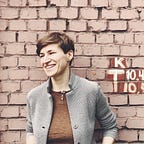3. Categories, channels and groups — how to best use them?
There are three basic concepts you need to get familiar with to use Channelkit at it’s full utility: categories, channels and groups.
Categories
Category is simply a card template for any particular type of information. Basic categories such as links, images, articles, books, contacts or notes help you visually identify your cards visually and search through them.
You can also create and customize your own categories. This will help you describe your cards in a consistent and professional way. To give an example — if you are collecting actor profiles for future castings you can have every little detail nailed and later used for search: eye color, height, driving skills.
We will talk more about custom categories in the next posts.
Channels
Channel is a kind of folder for your cards. All channels are private by default but can be shared with anyone if made public. The best public channels are featured in our catalog. Also, Channelkit Professional users can share their channels “secretly” via a secret link.
Groups
Groups come handy when you have too many Channels. Basically, a group is a folder for Channels. You can start with very generic groups to divide channels related to your work and to your personal interests: “Projects” and “Personal”.
We’ll talk more about labeling and naming your channels and groups in the next post.
This post is a part of brief introduction letters for Channelkit users. The letters are packed with basic tutorials and ideas on how to keep your information and knowledge organised, so I decided to share them on Medium.
